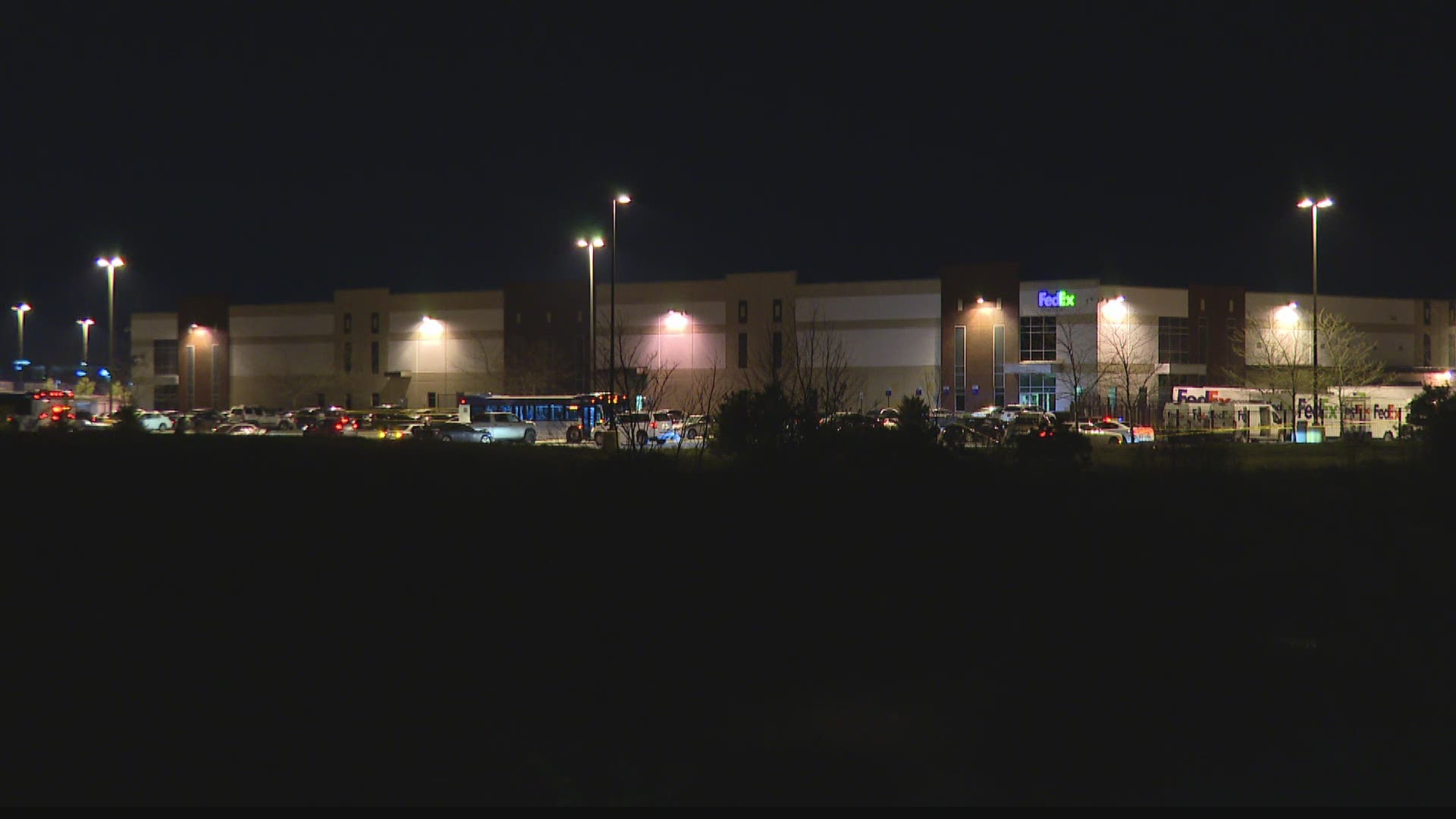INDIANAPOLIS — Thursday night's incident that left nine people dead, including the alleged gunman, at the FedEx Ground facility on the west side of Indianapolis is the latest mass shooting in the city.
IMPD is now investigating, along with the Federal Bureau of Investigation, its third mass shooting of 2021.
In January, six people including an unborn fetus were killed in a domestic shooting on North Adams Street. A teenage family member has been charged with the murders.
In March, a man who reportedly told police he wanted his girlfriend's stimulus check was charged with shooting her and four other people at a house on North Randolph Street.
According to Gun Violence Archive, a mass shooting incident occurs when four or more people are shot.
Neither the FBI or the Gun Violence Archive includes the shooter in casualty numbers. While the FBI doesn't provide a clear definition for a mass shooting, in 2013, Congress defined mass killing as a single incident that leaves three or more people dead.
The Gun Violence Archive gets their information from law enforcement and government sources, as well as from news media outlets.
In its research essay "Mass Shootings in the United States," the Rand Corporation said, "There is no standard definition of what constitutes a mass shooting, and different data sources—such as media outlets, academic researchers, and law enforcement agencies—frequently use different definitions when discussing and analyzing mass shootings."
"The U.S. government has never defined mass shooting as a separate category of crime," according to Rand, "and there is not yet a broadly accepted definition of the term."
Still, the three incidents in Indianapolis fit most accepted descriptions of a "mass shooting" since four or more people were shot and died in each incident.
The gray area arises when media, researchers, academics and law enforcement agencies use different definitions of mass shootings for their separate purposes.
But Rand found a common approach has been to set a casualty threshold of "four fatalities by firearm, excluding the offender or offenders." Research can rely on fatality data captured in administrative reports and, frequently, media.
Circumstances that lead to shootings also inform and, at times, cloud the data. Disagreement arises over whether to include multiple-victim shooting incidents that occur in connection with some other crime or domestic dispute, as was the case in the Adams and Randolph cases earlier this year.
"Because mass shootings that stem from domestic and gang violence are contextually distinct from high-fatality indiscriminate killings in public venues," according to Rand, "some analysts have argued that they should be treated separately."
In late December 2019 Congress approved a spending bill with $25 million allocated to fund federal research into gun violence. It was Democratic House Representative Nita Lowey who helped secure the funding inside of a $1.4 trillion spending bill.
It was the first time in over two decades that Congress had funded research of this kind.

